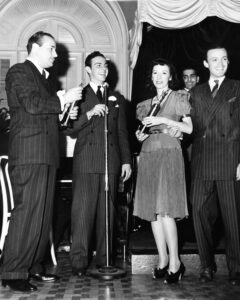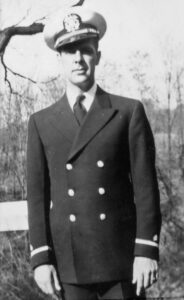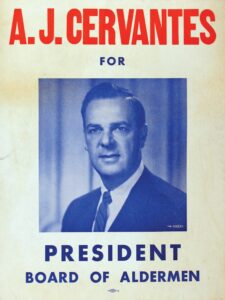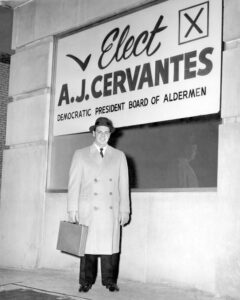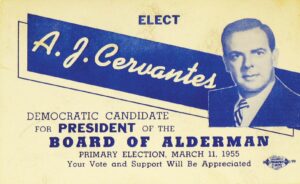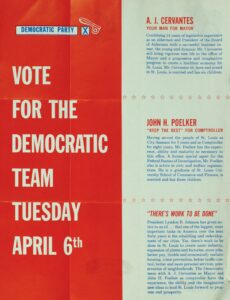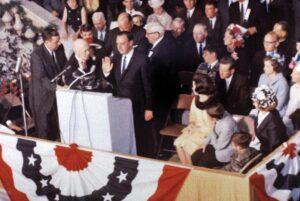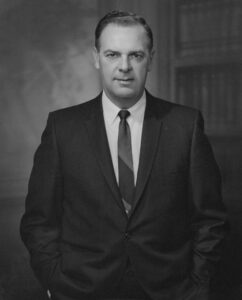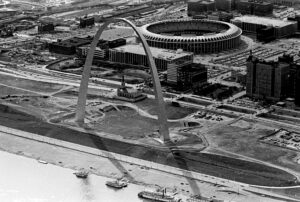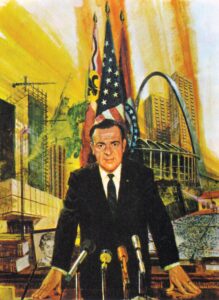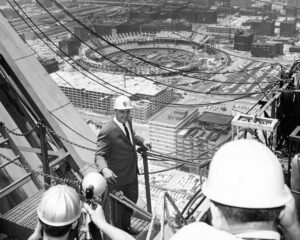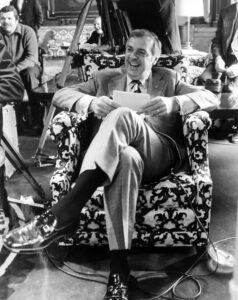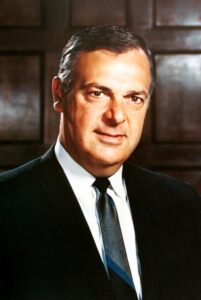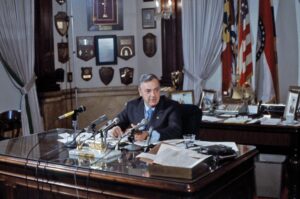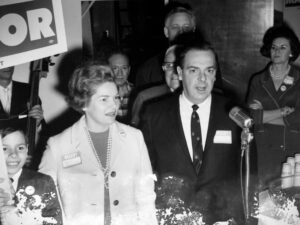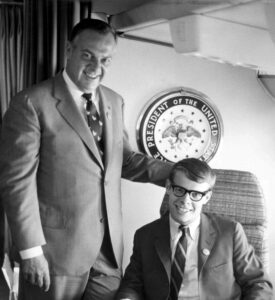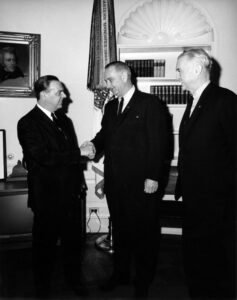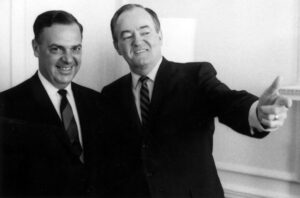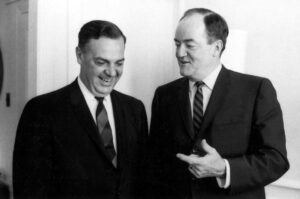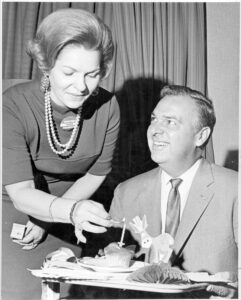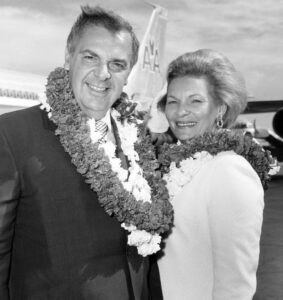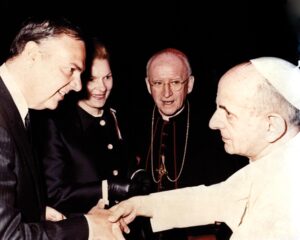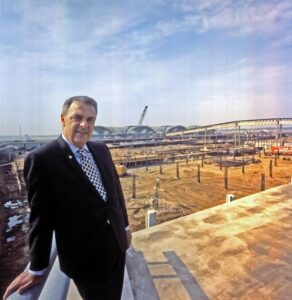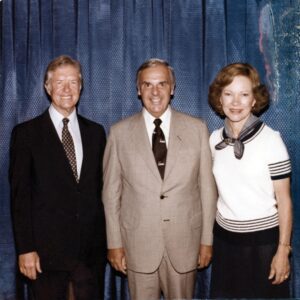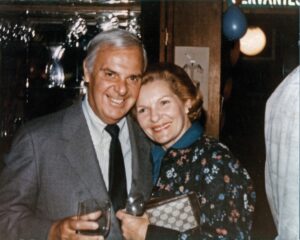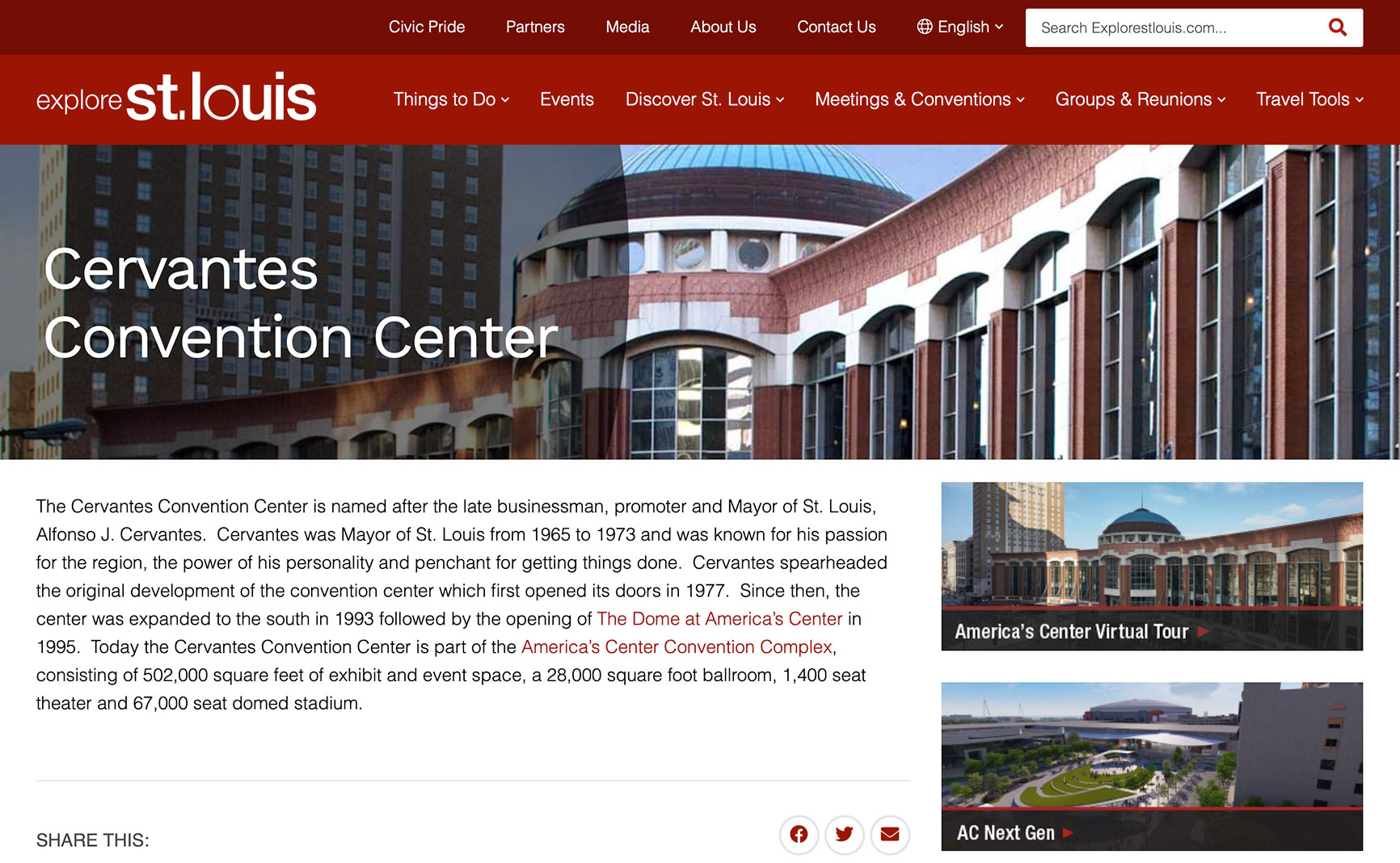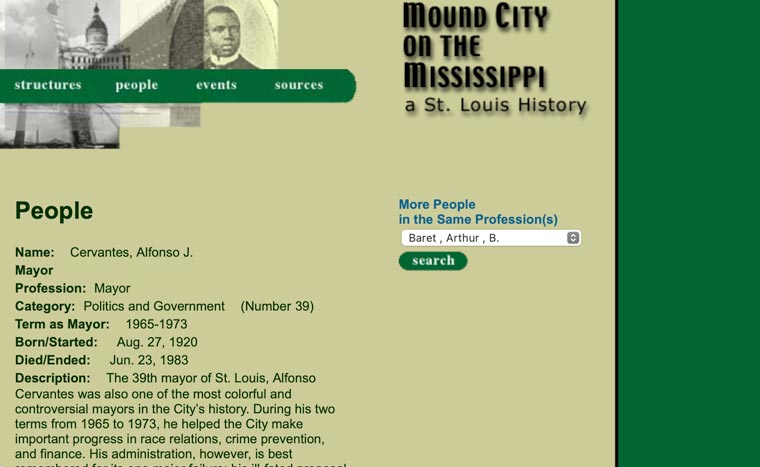PROFILE
OPEN LETTER – A.J. CERVANTES, JR.
IN MEMORIAM – CARMEN DAVIS CERVANTES
DOCUMENTARY
GALLERY
CERVANTES CONVENTION CENTER
CITY OF ST. LOUIS: MAYOR CERVANTES' BIOGRAPHY
PROFILE
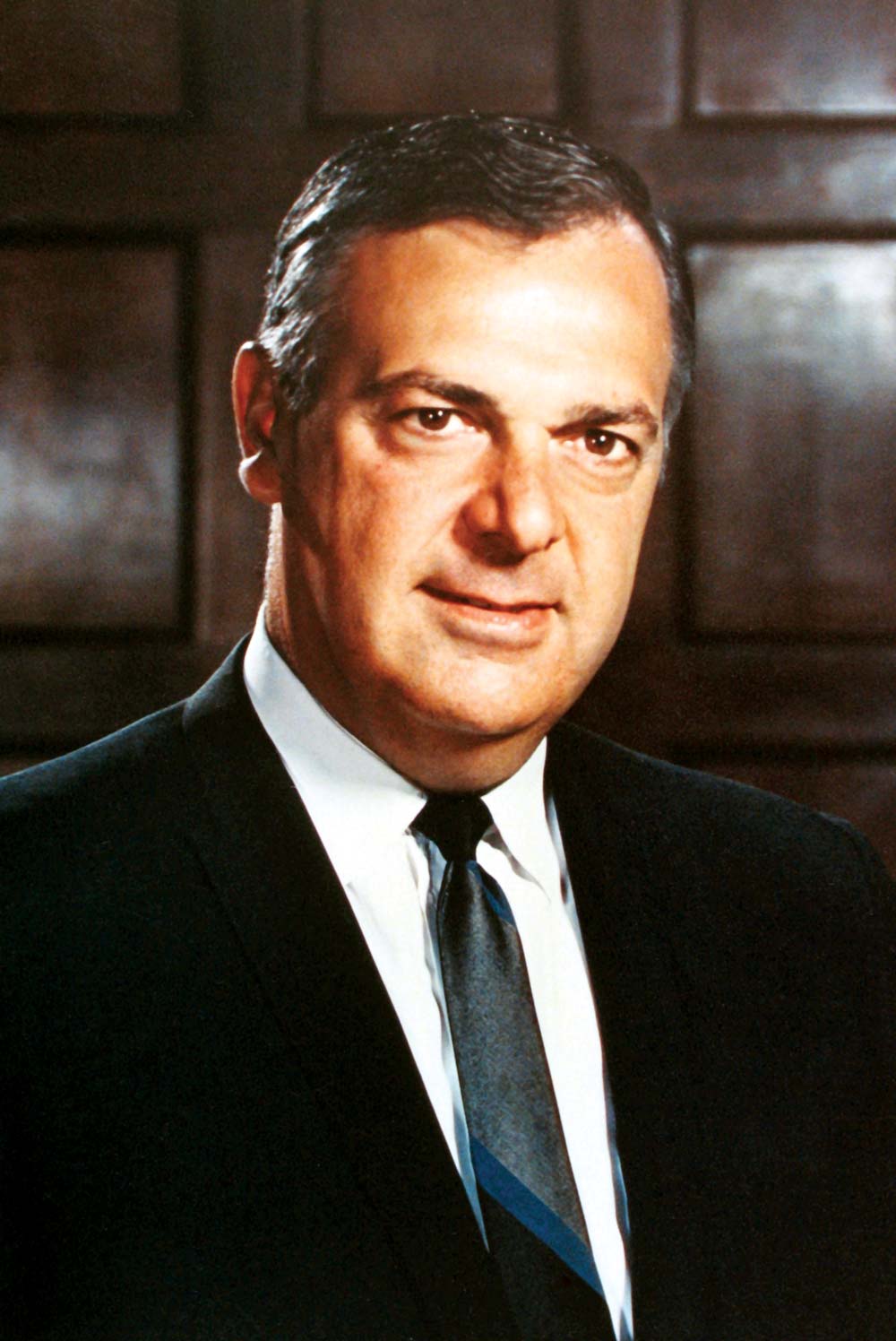

Born on August 27, 1920, Alfonso J. Cervantes was the 39th mayor of St. Louis.
Alfonso Cervantes has been considered one of the most effective, colorful and controversial mayors in the history of St. Louis. During his two terms from 1965 to 1973, he helped the city make important progress in bringing a successful businessman’s discipline to city finances, made extraordinary progress in race relations, facilitated a reduction of crime, and fostered extraordinary success in making St. Louis a tourist and convention destination.
Known for his extraordinary and non-stop energy, A.J. Cervantes worked tirelessly to make St. Louis a world class city. As the youngest of six children, Mayor Cervantes was born in St. Louis. Growing up in South St. Louis, he was an adventurous teenager who gravitated to Los Angeles in the pre-World War 2 era, and at 19, was promoting Rhumba contests in Hollywood at such famed watering holes as the It Café and the Conga Room. Enlisting the morning following the Pearl Harbor attack, he served in the Merchant Marine during the war.
Returning to his native St. Louis when the war was over, he followed in his father’s footsteps and had early success in the field of insurance. He met his future wife, Carmen Davis, in 1947. They would go on to have six children together.
In 1949, at 29, he was elected 15th ward alderman. After ten years, he was elected president of the board of aldermen in 1959. In 1963 he lost the presidency to Donald Gunn but subsequently won the Democratic primary for mayor over three term incumbent Mayor Tucker. In April of 1965 he was elected mayor over Republican Maurice R. Zumwalt, and in 1969 he was re-elected over Republican Gerald G. Fischer.
One of Mayor Cervantes’ greatest challenges was the racial unrest in the country that followed the assassination of Martin Luther King, Jr. in 1968. While other cities suffered through race riots, Mayor Cervantes worked tirelessly in the black community throughout the night of the assassination, meeting continuously with the city’s various black factions in meeting halls, in churches, and on the street in his commitment to keeping the peace. It was one of the hallmark achievements of his storied career and resulted in St. Louis being one of the few major American cities to avoid the horrendous riots which enveloped so many others. To further bolster his reputation as an advocate of black equality, his administration openly embraced the inclusion of African Americans to St. Louis government positions and commissions.
His efforts to reduce crime were equally effective. He spearheaded passage of crime-fighting legislation and established a Commission on Crime and Law Enforcement. Voters were convinced to pass a one per cent sales tax to provide more police and equipment. Car thefts were reduced by his “Lock It and Pocket the Key” program. He successfully lobbied the Police Board to put policemen on horseback in the parks.
In the area of finance, he was successful in passing a $2 million bond issue for the completion of the St. Louis Arch and grounds, a prerequisite for an additional $6 million in federal aid. In his dedication of the Arch in May 1968, the populist Mayor invited 50,000 citizens of St. Louis to attend.
In his relentless efforts to improve the city, he facilitated a $15 million bond issue for street lighting and a juvenile center, which was passed in 1970. The $25 million Convention Center bond issue was passed in 1972 after he found ways to retire the bonds through business taxes and convention revenues. His commitment to the convention business was the result of his recognition that St. Louis would never again be the center of traditional major industries. His view, now fully acknowledged, that St. Louis, as the geographic center of the United States, was ideally suited for a major convention city and would result in massive new city revenue streams to replace the ever-diminishing tax base from industries from bygone eras. His work was recognized when the newly built convention center was named in his honor as the Cervantes Convention Center.
Other initiatives during his two terms included the establishment of a Night Housing Court, the organization of a Business Development Commission to help keep businesses in the City and attract new ones, and the establishment of The Area Office of Aging, the Beautification Commission, the Citizens Service Bureau, and the Land Reutilization Authority.
One of the more controversial decisions he made as the city’s Chief Executive was his advocacy of the development of a new airport built in Illinois, adjacent to the St. Louis downtown. Given its proximity to the city center, he believed the site would be a great benefit to the city and drive much needed revenues to city businesses and, by extension, enhance the city’s tax revenues. However, the proposal stirred up so much controversy in St. Louis County and Jefferson City (Missouri’s capital) that it helped lead to his defeat for a third term in 1973.
In 1974, Mayor Cervantes wrote a book, Mr. Mayor, to explain his efforts to sell St. Louis to itself. Defeated in his comeback attempt for the Democratic nomination for mayor in 1977, he returned to private life, running his businesses and teaching at Saint Louis University.
In 2007, A.J. Cervantes, Jr, the Mayor’s eldest son, wrote, co-directed, and narrated the documentary “Mr. Mayor, the Life and Times of Alfonso J. Cervantes,” detailing the life of this extraordinary man.
OPEN LETTER – A.J. CERVANTES, JR.

February 23, 2022
Dear Friends…
At the time of this writing, my father, Alfonso J. Cervantes, the 43rd Mayor of the City of St. Louis, has been gone for almost 40 years. And yet the impact that he has had on the lives of the people he touched and the city he loved so deeply continues to resonate, and the evidence of his legacy on the history of St. Louis is still ubiquitous.
A number of years ago I was honored to produce, co-direct, and narrate Mr. Mayor: The Life and Times of Alfonso J. Cervantes. Delving through countless hours of interviews and research of reams of documents, one thing became abundantly clear: A.J. Cervantes loved St. Louis and spent the bulk of his adult life deeply enmeshed in this love affair. He and my mother Carmen forged a remarkable team working relentlessly to improve the lives of the citizens of St. Louis both present and future. During the 60s and 70s, when an economic malaise gripped St. Louis and much of America – when, as Richard Gephardt says, “the bottom fell out of the city” – my father remained steadfast in his dream of a great future for the City of St. Louis, and worked tirelessly to sell his vision of St. Louis to St. Louisans. It was the job he was born for: former Senator Thomas Eagleton called my father “a populist mayor with a great touch.” To three-term Mayor Vincent Schoemehl, “he was an extraordinary man in extraordinary times.”
The documentary serves as an in-depth study about the life of this “extraordinary” man. It should be noted that this production was created over the course of a number of years. Some of the footage – including commercials from his 1972 campaign (which I was able to work on as a writer and producer) – has resided in numerous locations, buried in closets or file cabinets, waiting to see the light of day. I am glad to say it did.
I also want to draw attention to that other extraordinary member of this remarkable legacy of devotion to St. Louis: my mother Carmen Cervantes (1924-2016). Carmen spent countless hours with me on camera and off, patching together a history, helping to identify a Mayor’s lifetime of memorabilia, recounting specific details of hundreds of people and places, and providing the context of many remarkable events. The amount of time and energy generously invested by my mother cannot be overemphasized, and I thank her for her contributions to this project.
The contributions to the production were numerous and came from many corners. I would especially like to thank former Senator Thomas Eagleton, former Mayor Vincent Schoemehl, Mayor Francis Slay, former Congressman Richard Gephardt, former Congressman Bill Clay, Sr., former President of the Board of Alderman James Shrewsberry, the St. Louis Ambassadors, Patrick Connaghan, and the St. Louis Board of Alderman.
Here’s to you, Dad!

A.J. Cervantes, Jr.
IN MEMORIAM – CARMEN DAVIS CERVANTES
DOCUMENTARY

